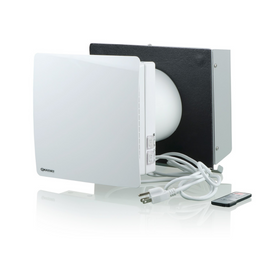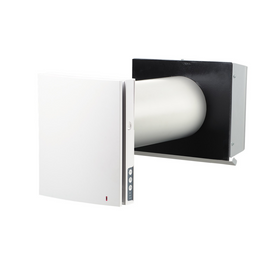
How Homeowner Behavior Can Improve Operational Efficiency
Last Updated: Mar 29, 2025Solar panels and high-quality insulation can undoubtedly help make a home consume less energy. But, how you live and operate a home—adopting a sustainable lifestyle—can have a much more significant impact on the environment in the long run. Today, many homeowners are unaware of the importance of homeowner behavioral strategies for reducing their household's carbon footprint. For example, replacing incandescent bulbs with LED lights could reduce the amount of energy your home requires for lighting. However, forgetting to turn those lights off when not in use negate the potential efficiency savings.
Table of Contents
- Why Does This Matter?
- Are Big Homes Bad For The Environment?
- How Can Smart Technology Use at Home Reduce Energy?
- Can Human Behavior Reduce Energy Use?

Similarly, installing a smart or programmable thermostat might save homeowners between 10 and 15 percent on their heating and cooling bills. But these energy efficiency savings require correct usage of the technology! Millions of homes in North America purchase smart thermostats every year. Learning how to use smart home technologies is essential for increasing the operational efficiency of the structures we inhabit.
For this reason, the most rigorous and exacting sustainable building certifications, such as the Living Building Challenge, don't simply offer certifications to homes with the right technologies in place. Instead, they require at least 12 months of homeowner occupancy data. This requirement ensures that the humans who inhabit these homes know how to correctly use the sustainable technologies that builders and designers put in place during construction.
In an interview with Allison Capen, the former Technical Director of the Living Building Challenge, she told us that requiring a twelve-month performance period after occupancy enables Living Building Challenge project teams to know they have met the requirements. She went on to say that they learn along the way about reducing energy demand, commissioning systems, procurement policies, and educating occupants. Doing all this enables them to continue to operate as desired, even after the auditor is gone. The US Green Building Council also recognized the importance of ongoing operations and maintenance of commercial buildings when it introduced the LEED rating system for Existing Buildings. This rating system also requires at least 12 months of energy, water, and waste data to measure ongoing performance.

Why Does This Matter?
Over 70 million single-family detached homes in the United States use a lot of energy and water. A report by the National Academies of Sciences, Engineering, and Medicine stated that back in 1993, space heating and cooling accounted for approximately 58% of the total residential energy use in the US. They went on to say that, By 2011, heating and cooling made up only 48%, due to more efficient equipment, better insulation, and shifts in population to warmer climes. The study also found that overall home energy consumption increased during the same period. This increase was primarily due to a marked increase in the demand stemming from appliances, electronics, and lighting, in addition to the rise in the average size of single-family homes.

This report shows two exciting trends in household energy usage. On the one hand, home technology, including lighting, appliances, and mechanical heating and cooling systems, is becoming increasingly energy-efficient. Government programs like ENERGY STAR and WaterSense make it easy for homeowners to choose appliances and fixtures for their homes that consume less energy and water. On the other hand, and despite these energy efficiency gains, the total energy we use at home continues to rise.
At the same time, there is a massive potential for energy savings in the residential sector. A study conducted by the Oak Ridge National Laboratory found that existing homes present a vast, mostly untapped potential for energy savings. The study states that by 2020, Americans could save about 3.25 of the 99.5 quads of energy in the US through residential building energy savings. They estimated that if the approximately 130 million single-family homes in America reduced their energy use by 40%, about 160 million metric tons of CO2 emissions could be prevented.
Per capita, household water use has shown a steady decline over the years due to improved technologies such as low-flow showerheads and dual-flush toilets. In 1970, 370 billion gallons of water were required per day in the United States or about 1,800 gallons per capita per day. That number has dropped to about 322 billion gallons—a 13 percent decline. The EPA estimates that the average American uses around 82 gallons of water a day per person for residential use. These results show that residential consumption is at least in part responsible for this drop in total water demand, despite a rapidly growing population.
This article offers a few important suggestions for how homeowners can adopt a new mindset to maximize their homes' sustainability.

Are Big Homes Bad For The Environment?
The most impactful thing that homeowners can do to use less energy and water in their homes is to rethink the size of the house they build and live in. Larger homes will require more energy to heat and cool, more light bulbs for illumination, more appliances, and more stuff to fill up the empty rooms. The average size of a new home in the UK is 76 square meters or about 818 square feet. However, in the United States, the average square footage for new single-family homes increased to 2,641 square feet in 2018. Simultaneously, the average household size has dropped, resulting in the average living space per person doubling.
Even with the latest technologies, the most energy-efficient building strategies and mechanical systems, and the best smart home systems, larger homes will inevitably require more energy and materials than their smaller counterparts. Returning to our comparison with the UK, the average monthly electricity use in the UK is only about 328 kWh (or 3,940 kWh per year), while in the United States, that number is more than double at 877 kWh per month (or 10,649 kWh yearly).

How Can Smart Technology Use at Home Reduce Energy?
A report titled "Strategies to Achieve Net Zero Homes" finds that smart technologies that help homeowners actively monitor their home energy performance are essential for lowering energy usage. Easy-to-understand energy-related information can help homeowners become "more motivated to achieve NZE (net-zero energy homes) and therefore are more involved in designing their NZE homes if relevant and understandable information and an accepted design process that encourages greater homeowner participation are available." In other words, what gets measured gets managed.
Instead of rushing to buy the next smart home product that claims to help you reduce your energy usage, it is essential to take the time to learn how to use it. Not all smart technologies are necessary for every home. Homeowners need to distinguish between products that improve efficiency versus products that don't.
Best Sellers

NuvoH2O Home Softener Replacement Cartridge
NuvoH2O
In Stock

Vents TwinFresh Comfo RA1-50-2 Ductless Energy Recovery Ventilator
Vents
In Stock

NuvoH2O Manor Water Softener System Replacement Cartridge
NuvoH2O
In Stock

Emporia Classic Level 2 48 AMP EV Charger UL Listed
Emporia
In Stock
2 Colors

Vents TwinFresh Expert RA1-50-2 Ductless Energy Recovery Ventilator
Vents
In Stock

Drolet Ultra-Quiet 100 CFM Blower With Variable Speed Control - AC02050
Drolet
In Stock

Victory Range Hoods Sunset 600 CFM White Flush Ceiling Mount Dimmable LED Range Hood
Victory Range Hoods
In Stock

Santa Fe Compact70 Dehumidifier - 4044110
Santa Fe
In Stock

Victory Range Hoods Sunset 600 CFM Flush Ceiling Mount Dimmable LED Range Hood
Victory Range Hoods
In Stock

QuickBOLT QB2 with Microflashing Multi Roof Mount Solar Panel Fastener Kit
QuickBOLT
In Stock

Can Human Behavior Reduce Energy Use?
Homeowners can learn to accept limits and boundaries to their consumption if they choose to. For instance, do you really need an electric can opener when a simple manual option can do the same thing, perhaps in less time? While it might be nice to wake up in the winter to a 75 degree home, might you be able to survive if you turned down the thermostat to 68 degrees?
Limitations are often seen as negative in the American mindset and so can be hard to change. Often, people do not want to sacrifice comfort and convenience. However, we argue that sustainable investments in our homes can actually improve our comfort most of the time. The acceptance of limits and boundaries can go a long way towards saving resources. People who live in off-grid homes, for example, understand that the energy available to them through their solar panels or wind turbines is restricted. They then make behavioral changes that allow them to live within the scope of the available energy.
Most homeowners will not live completely off-grid. But, this mentality of controlling and constraining our consumption is the most critical behavioral strategy for creating a more sustainable lifestyle.

This is not meant to be a harsh commentary on the human condition. Instead, we hope that it sparks ideas and conversations about how we think about sustainability—and how we might rethink our behaviors—in the world we live in today.
Tobias Roberts
Tobias runs an agroecology farm and a natural building collective in the mountains of El Salvador. He specializes in earthen construction methods and uses permaculture design methods to integrate structures into the sustainability of the landscape.
